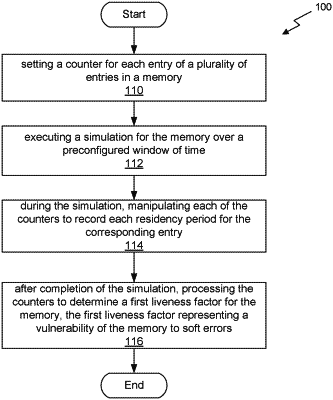| CPC G06F 11/3471 (2013.01) [G06F 11/073 (2013.01); G06F 11/0757 (2013.01); G06F 11/1068 (2013.01); G06F 11/3419 (2013.01); G06F 11/3457 (2013.01); G06F 11/3476 (2013.01); G06F 2201/81 (2013.01); G06F 2201/88 (2013.01)] | 20 Claims |

|
1. A method, comprising:
executing a simulation for a memory comprising a plurality of portions over a window of time;
during the simulation, determine each residency period for the corresponding portion, wherein the residency period is determined according to:
a first time that the corresponding portion is written with data, and
a second time of a last read of the data from the corresponding portion; and
after completion of the simulation, computing a first liveness factor for the memory based on the residency periods, the first liveness factor representing a vulnerability of the memory to soft errors.
|